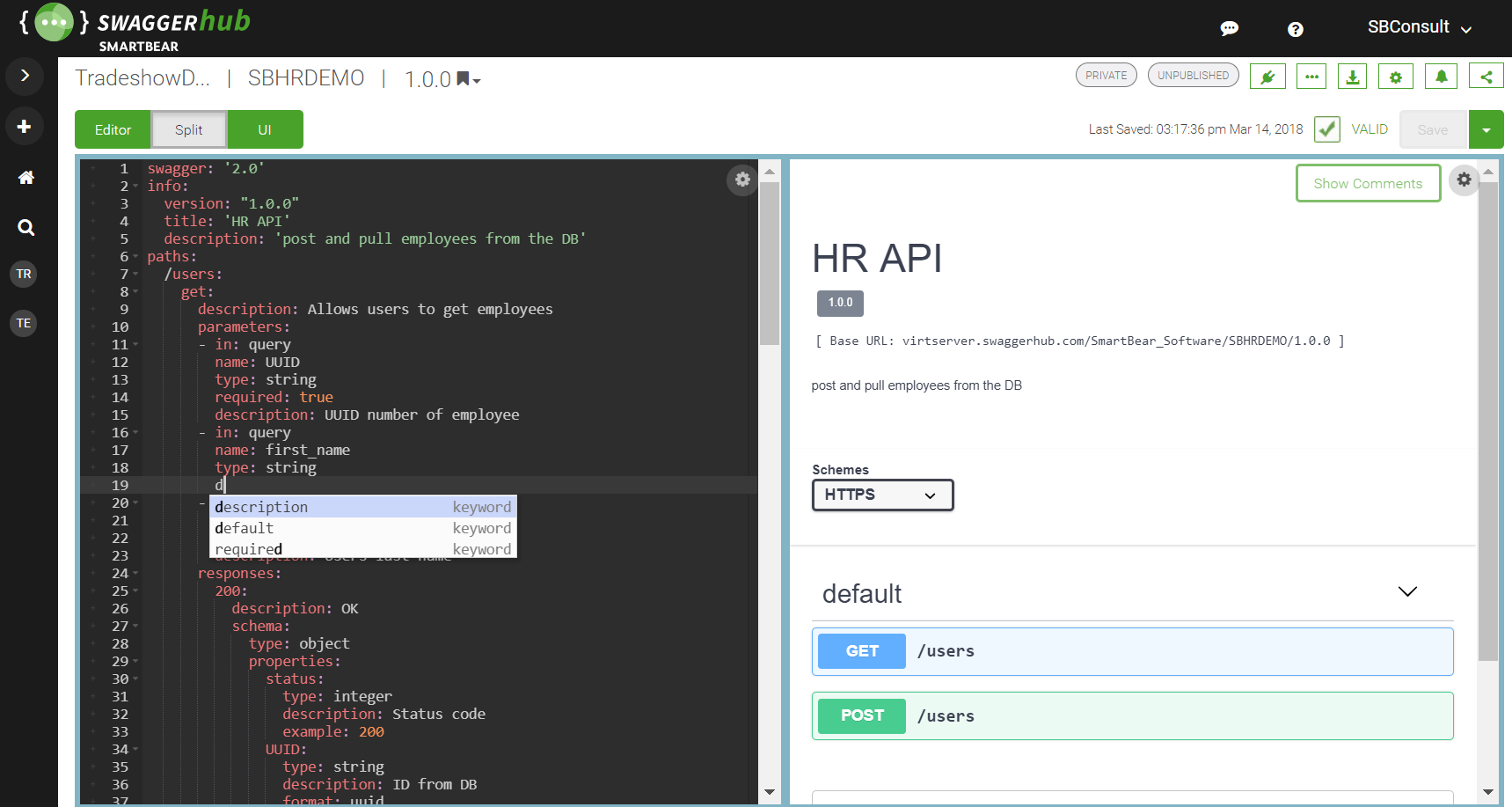


- #Usin swagger editor and changing request url install#
- #Usin swagger editor and changing request url code#
- #Usin swagger editor and changing request url download#
What you do is open up the Atom Preferences, and navigate to the Install tab. ) and therefore was happy to learn it's easy to edit a Swagger file in Atom. I happen to live inside the Atom editor ( There are probably other editors directly supporting Swagger specifications.
#Usin swagger editor and changing request url download#
Why not just download the Release from the Github repository instead? Editing an OpenAPI/Swagger specification in Atom Or, you can then open node_modules/swagger-editor/dist/index.html in Firefox, for exactly the same experience as having downloaded a release from the Github repository. To do that you must change directory to node_modules/swagger-editor and then run npm start, but that failed because one of the dependencies does not support Node 6.x. it claims you can npm install swagger-editor and then do npm start. There is also an npm package for Swagger Editor at But, since it's exactly the same Editor, you have the exact same clumsiness as to updating the file after editing. The editor is excellent, as is the instant feedback as to the API design. You'll be treated with exactly the same user experience as above. In the unpacked directory structure is a file, index.html - open that file in a web browser (Firefox) that supports local JavaScript execution.Download the latest release, and unpack it in your filesystem.Go to the Swagger Editor Github repository at.The documentation for this on the Swagger website is unclear, to say the best. You can install the Editor locally but the user experience is about the same. If it were an Electron app it could just access local files and have the same excellent behavior. That's because it's running as a web application giving indirect access to files. In other words, using the Swagger Editor is not entirely satisfying. If the specification was in a local file, you have to ensure the download overwrites that local file. If the specification was in a remote location such as a Github repository, you then have the problem of updating that repository. You can Download the new specification as either YAML or JSON. Once you're done editing comes a problem - incorporating the specification file back into your project area. It supports importing either from a local file, or from a URL. To edit your own API specification you must first import the specification file. The image above shows the online Editor browsing the Petstore sample application. It's possible to run the Editor online with no setup on your part at With it you can easily explore what you've done, and directly determine if your intent is matched by the code.
#Usin swagger editor and changing request url code#
As you edit an OpenAPI specification, it interactively verifies the code and gives you errors and warnings, while showing you a very nice constantly updated summary of the API you're creating.


 0 kommentar(er)
0 kommentar(er)
